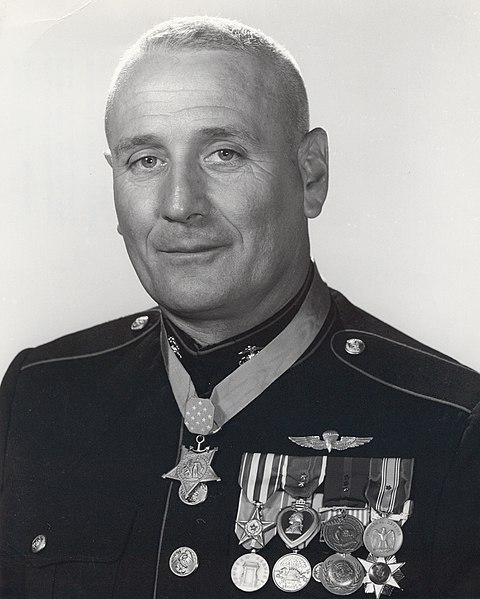

Because of Marine Gunnery Sergeant Jimmie Howard’s perseverance and focus, a platoon was able to hang on during one of the Vietnam War’s fiercest battles. Two years after earning two Purple Hearts and a Silver Star, Jimmie Earl Howard arrived in Vietnam in April 1966, when he was 36 years old. The Burlington, Iowa, native enlisted in the Marine Corps in 1950 after completing a year at the University of Iowa.
Here’s a look back at GySgt Howard’s career and what he and his platoon managed to accomplish.
June 13, 1966: Staff Sgt. Howard’s platoon, which includes just 15 other Marines and two Navy hospital corpsmen from C Company, 1st Reconnaissance Battalion, 1st Marine Division, are helicoptered inside enemy-controlled Hiep Duc Valley in northern Southern Vietnam. Their landing point, Nui Vu Hill, is a 1,500-foot observation point. Known on military maps as Hill 488, it would quickly become rechristened as “Howard’s Hill.”
June 15, 1900: An Army SF team reports that a 300-person North Vietnamese Army battalion is moving toward Hill 488. Darkness is falling, and there’s no time to alert Howard or pull out the platoon.
2100: American personnel shoot a Viet Cong scout just 12 feet from their position, provoking a fire barrage that wounds one Marine. Howard pulls her men into a tight circle just 20 yards in diameter.
A lull in the firefight is short-lived. The NVA returns with reinforced lines that attack Howard and his unit with gunfire, grenades, mortars, and machine guns. Howard moves in between his young Marines, encouraging them, redirecting when necessary, and helping them pinpoint their targets. Despite his advice, every single Marine and both Navy corpsmen are wounded. Two are killed in fierce hand-to-hand combat. The enemy falls back – temporarily.
Howard uses the fall back to radio Lt. Col. Arthur J. Sullivan at nearby Chu Lai. He tells Sullivan, “You have to get us out of here.”
But there was no rescue force that could reach Howard and his men that night.
From deep in the valley comes the voice of the enemy. “Marines, you die in an hour.”
One young Marine looks at Howard and asks if he can respond. Howard tells him to yell anything you like. Soon, the entire platoon is shouting at the enemy with the worst schoolyard taunts. Later Howard would recall that when his unit started laughing at the enemy, something shifted for the NVA soldiers. “I think it had a chilling effect on them,” he recalled.
For five hours, the NVA alternates between small probes and full-on assaults of the entrenched platoon. Howard is hit in the back with grenade fragments and can’t move his legs. He continues to drag himself around the perimeter to encourage his platoon and distribute ammunition.
Soon the grenade supply is gone, so Howard issues one of the most basic military strategies – he tells his Marines to throw rocks at the enemy. The NVA mistake the sound of rocks as grenades and inadvertently expose themselves to single-shot fire.
At 0300, the radio dies. Commanders in Chu Lai fear that Howard and his Marines are gone. Three hours later, Howard sounds Reveille, as if his unit hadn’t been in a firefight all night. Demoralized, the NVA troops begin to fall back.
Dawn comes to the valley, and that’s when, finally, the helicopters start to arrive. By now, the surviving Marines have only eight rounds of ammunition between them, and they’re still under sporadic fire. Howard waves off the first of the rescue aircraft, and one gets shot down. It takes another five hours for a full relief force to fight its way from the hill’s base to where Howard and his Marines are on top. When the rescue arrives, just three Marines can walk without assistance. Six out of the 18 are dead.
Three Marines and one corpsman are awarded Navy Crosses, and 13 Marines receive Silver Stars. A year later, Howard received the Medal of Honor. The ceremony is attended by eleven of the surviving Marines.
Howard retired from the Marines in 1977 after serving 27 years in the Marine Corps. He died on Nov. 12, 1993. In 1998, Navy Secretary John H. Dalton named one of three Arleigh Burke-class guided-missile destroyers USS Howard in honor of GySgt. Howard and his courage in Vietnam.
Featured image: U.S. Navy photo
